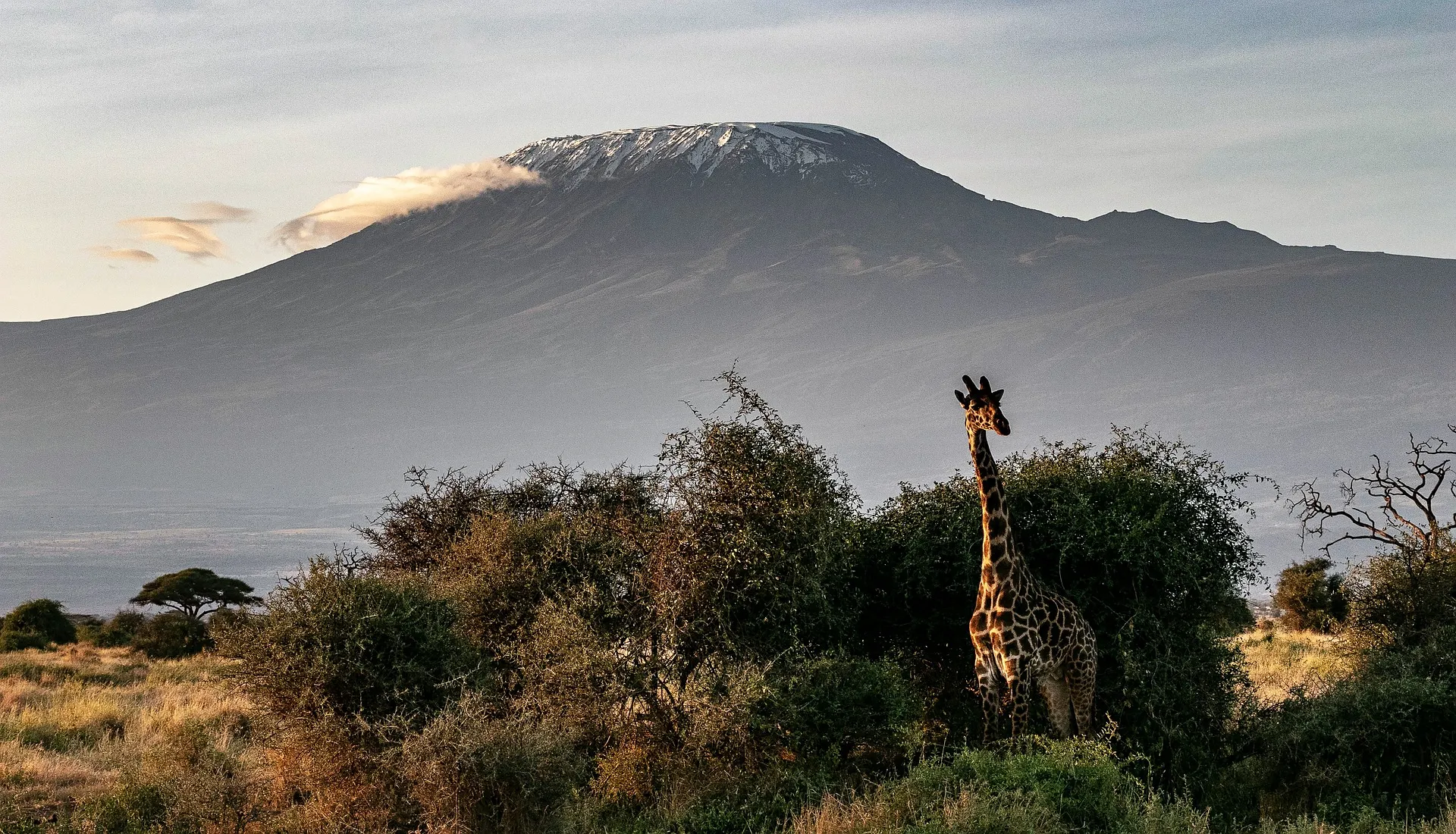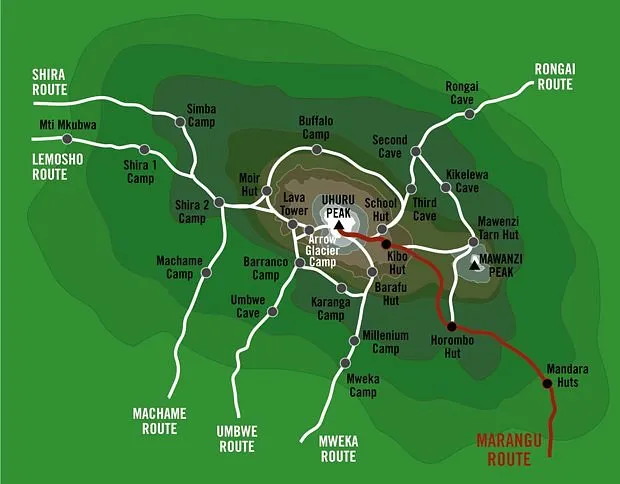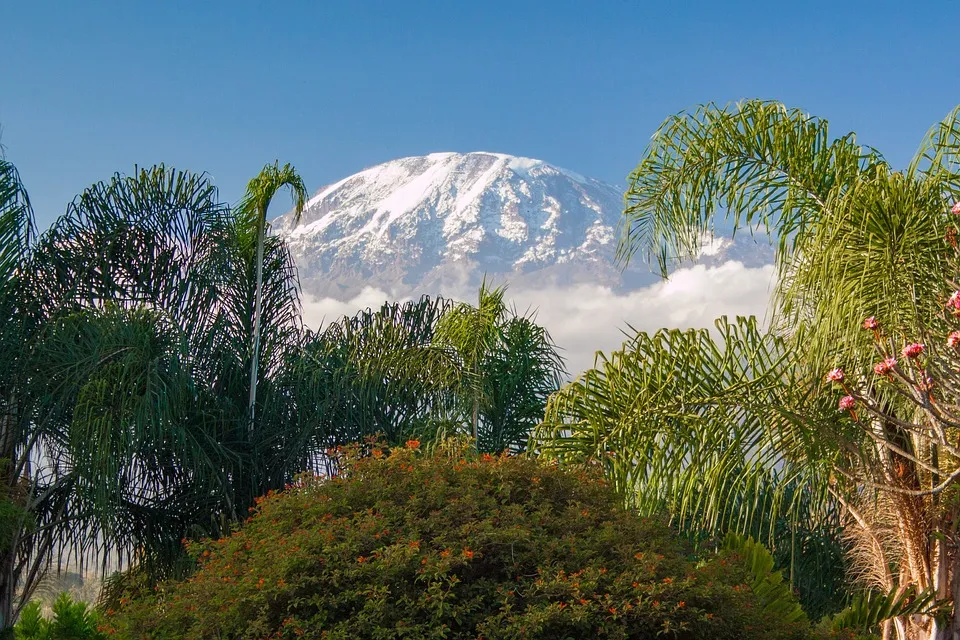Top Tips to Successfully Hike Kilimanjaro National Park

Looking to hike Kilimanjaro? Our guide covers everything you need to successfully reach Africa’s highest point. Learn about the best routes, when to climb, and what gear to bring. Get the essential tips for a safe and unforgettable Mount Kilimanjaro hike.
How to Book Our Climbing Mount Kilimanjaro Packages
Are you looking for an East Africa safari for Mount Kilimanjaro trek? We are one of the leading mount Kilimanjaro trekking companies with over 20 years of experience. You can reach us today at +254-748-258-880 or james@ajkenyasafaris.com or safarioffers@ajkenyasafaris.com to book your safari.
Our Most Booked East Africa Packages and Tours
2025 TOP PACKAGES | SAFARI PRICE FROM | SEE THE ITINERARY |
From USD 1293 | ||
6 Days Kenya Wildlife Tour | From USD 1803 | |
10 Days Kenya Wildlife Safari | From USD 3038 | |
7 Days Masai Mara & Mombasa Flying Tour | From USD 3298 | |
13 Days Group Tour Safari | From USD 4060 | |
From USD 3230 | ||
From USD 1854 | ||
2 Days Hell’s Gate & Nakuru Tour | From USD 683 | |
3 Days Huduma Day Safari | From USD 1470 | |
3 Days Luxury Masai Mara Migration Packages | From USD 2600 | |
From USD 1475 | ||
From USD 895 |
View Photos of Mount Kilimanjaro
Key Takeaways
Climbing Kilimanjaro involves navigating diverse ecosystems and requires careful preparation for varying weather conditions and high altitude.
The best times for Kilimanjaro climbers to hike to the summit of Kilimanjaro are from December to mid-March and June to October, avoiding the rainy seasons for better trail conditions.
Choosing the right route is crucial; popular options include Marangu for huts, Machame for acclimatization, and Lemosho for fewer crowds and scenic views.
There are a total of seven main routes to choose from with the right one depending on your technical climbing skills.
Overview of Mount Kilimanjaro
Mount Kilimanjaro, located in northern Tanzania, near the Kenyan border, stands at a majestic 5,895 meters (19,340 feet) above sea level with Uhuru Peak being the highest point. It’s not just the height that makes Kilimanjaro special; it’s the fact that it’s the tallest free-standing mountain in the world with seven summits. This iconic landmark is often referred to as the “Roof of Africa” due to its towering presence over the continent.
As you climb Kilimanjaro, you’ll traverse through diverse geographical features that range from grasslands and tropical rain forests to alpine deserts and glaciers. Each zone presents its own unique challenges and stunning beauty, making the trek a truly multifaceted adventure. However, the mountain is also experiencing the impacts of climate change, with its glaciers shrinking over the years.
The micro-climates you’ll encounter when you climb Kilimanjaro vary drastically—from the hot, humid base to the freezing summit. This variety means that climbers must be prepared for a wide range of weather conditions, adding to the complexity and allure of the Kilimanjaro routes.

Best Time to Hike Kilimanjaro
Timing your Kilimanjaro climb is crucial for a successful and enjoyable trek to the seven summits. The best time to climb Kilimanjaro is during the warm, dry months from December to mid-March and mid-June to October. These periods offer the most stable weather conditions, making your hike more pleasant and increasing your chances of reaching the summit. January and February are particularly favored for their warm temperatures and clear skies.
Avoid planning your climb during the long rainy season, which starts in March and extends through May, as the trails become muddy and slippery and there is less oxygen. Similarly, the short rainy season from early November to early December can also pose challenges even when climbing using the most popular route.
While June marks the transition from the rainy season, it still might feature cloudy skies and cooler temperatures. For the best experience, consider trekking from July to October, when the weather is drier, albeit colder, and a great view of the tallest peak using the seven routes.
How to Get to Kilimanjaro
The most convenient way to reach Mount Kilimanjaro, the highest mountain in Africa, is by flying into Kilimanjaro International Airport (JRO), located about an hour’s drive from both Moshi and Arusha, the primary gateways for Kilimanjaro treks. Several major airlines provide flights to JRO. These include Turkish Airlines, Qatar Airways, KLM, Ethiopian Airlines, Air France, and Swiss International Air Lines. This direct access makes your journey simpler and allows you to focus on the adventure ahead of climbing to the summit of Kilimanjaro, called Uhuru Peak.
You can alternatively fly into Nairobi, Kenya. From there, you can take a bus or a connecting flight to Tanzania. Another option is to fly into Dar es Salaam, Tanzania’s largest city, and catch a local flight to Kilimanjaro.
Once you arrive, Moshi, Arusha, and Kilimanjaro Tour Operators are well-equipped to cater to climbers, offering various services and accommodations to prepare you to climb Mount Kilimanjaro for your Kilimanjaro expedition. Many adventurers have climbed Kilimanjaro successfully, and you can also reach the summit with ease..

Choosing Your Kilimanjaro Route
Selecting the right route is a critical decision for your Kilimanjaro climb. With seven main Kilimanjaro routes to choose from—Marangu route, Machame route, Lemosho route, Rongai route, Northern Circuit, Shira, and Umbwe—each offers unique experiences and challenges. The Umbwe Route or Inca Trail is known as the most challenging due to its steep ascents and lower success rates, while routes like Lemosho and Machame offer better acclimatization profiles and higher success rates if you wish to reach Uhuru peak.
The Marangu Route is the only route often considered the easiest, features hut accommodations but has a lower success rate compared to other routes. To help you decide, we’ll delve into three popular routes: Marangu, Machame, and Lemosho, each with its own set of advantages and considerations.
Marangu Route
Known as the ‘Coca-Cola’ route, the Marangu Route is the only path that offers hut accommodations, providing dormitory-style beds in rustic huts. This makes it a popular choice for those who prefer not to camp. However, despite being considered the easiest route on Kilimanjaro, the Marangu Route has a lower success rate than other routes.
The ascent and descent follow the same path, which can be a bit monotonous for some climbers. Nonetheless, the Marangu Route remains a favorite for its relative comfort and straightforward trail.
Machame Route
The Machame Route is renowned for its stunning scenery and excellent acclimatization profile. Starting on the southern slope, this route takes you through a lush tropical rainforest before ascending to higher altitudes. The varying altitudes allow climbers to “climb high, sleep low,” which is beneficial for acclimatization.
For beginners, a seven-day option is recommended to allow for better acclimatization. Unlike the Marangu Route, Machame uses different paths for ascent and descent, adding to the overall experience.
Lemosho Route
Starting on the western side of Kilimanjaro, the Lemosho Route is known for its scenic views and fewer crowds. Covering a distance of 67 kilometers over 7-8 days, this route offers ample time for acclimatization, contributing to its higher success rate compared to other routes.
The Lemosho Route begins at a lower altitude, which also aids in acclimatization and provides a more gradual ascent compared to other paths. Its diverse landscapes and serene environment make it a favorite among climbers seeking a less crowded experience.

Preparing for the Hike
Preparation is key to a successful Kilimanjaro trek. Both physical and mental readiness are crucial as the climb demands endurance and a positive mindset. Engage in aerobic exercises and strength training at least four times a week for two months before the hike. Hiking at higher altitudes can also help prepare your body for the conditions you’ll face on Kilimanjaro.
Incorporate day hikes with moderate elevation gains to build stamina and get used to long walking hours. A good fitness level is essential, and you should be comfortable hiking 8-10 kilometers. Regular stretching and warm-ups are important to prevent injuries. Remember, successful summits rely heavily on effective acclimatization rather than just physical fitness.
Mental preparation is just as important. Maintaining a positive mindset can significantly enhance your confidence and overall experience on the trek. Consider using altitude simulators like masks and tents to acclimate your body to lower oxygen levels before the climb.
Necessary Gear for Climbing Kilimanjaro
Having the right gear can make all the difference on your Kilimanjaro journey. A layered clothing system is essential to adapt to the varying temperatures and weather conditions you’ll encounter on the mountain. A warm, insulated jacket is crucial for the colder nights and summit attempts. Ensure you have mid-weight trekking boots with good ankle support to handle the rugged terrain.
A 4-season sleeping bag rated for extreme temperatures, ideally around -15°C, is necessary to keep you warm during the cold nights. You’ll also need a waterproof duffle bag for your main gear and a daypack for hiking supplies. Trekking poles can ease the strain on your joints, especially during descents.
Don’t forget to pack sunglasses with high UV protection due to the increased sun intensity at higher altitudes. Personal hygiene items like wet wipes and hand sanitizer are essential due to limited washing facilities on the trek.

What to Expect on the Trek
A typical day on Kilimanjaro starts early, with hot drinks available around 6:30 AM and breakfast served by 7:00 AM. The trekking pace is leisurely, with average daily walking times of 4 to 6 hours. After lunch, guides often recommend an acclimatization hike to help your body adjust to the altitude while hiking Mount Kilimanjaro.
Health checks are performed in the mornings and evenings to monitor your well-being, ensuring that any symptoms of sickness are promptly addressed. Summit night is the most challenging part of the trek, with climbers typically waking around midnight for a 10 to 14 hour ascent to Uhuru and descent.
The final push to the mount kilimanjaro summit is both physically and mentally demanding, but reaching the top and witnessing the sunrise over Africa is an unforgettable reward.
Costs Involved in Hiking Kilimanjaro
The cost of climbing Kilimanjaro can vary widely, typically ranging from $2000 to $6000 depending on the operator and services provided. For a 7-day group climb, expect to pay between $2600 and $2800. Shorter 5-6 day climbs are slightly cheaper, averaging between $2100 and $2400.
National park fees and camping fees constitute a significant portion of the expenses, with daily park fees around \$70 per person paid to park authorities and park entrance fees making up about 40% of the total trip cost. Additional costs include staff wages, food, transportation, flights, visas, and other incidental expenses.

Safety Tips for Hiking Kilimanjaro
Safety should be a top priority when climbing Kilimanjaro. The risk of altitude sickness increases significantly above 9,000 feet, and acute mountain sickness (AMS) is the most common cause of fatalities on the mountain. To mitigate these risks, it’s crucial to prioritize acclimatization by ascending slowly and incorporating rest days into your schedule. Guides set a slow pace to help climbers adjust to the altitude.
Staying hydrated is vital for preventing dehydration, which can hinder acclimatization. Aim to drink 3-4 liters of water a day while climbing Kilimanjaro. Sunscreen with at least SPF 40 is essential due to intensified UV exposure at high altitudes. Avoid narcotics, alcohol, and stimulants, which can aggravate altitude sickness.
Daily health checks by guides, who are trained to recognize symptoms of altitude sickness, include monitoring oxygen saturation levels through pulse oximeters. Travel insurance is also essential to cover unforeseen events, including emergency medical evacuation during the trek.
Post-Climb Activities
After successfully climbing Kilimanjaro, you might want to reward yourself with some well-deserved relaxation and adventure. A safari in the Northern Circuit, encompassing Tarangire, Ngorongoro Conservation Area, and Serengeti, is a popular post-climb activity. The Serengeti offers opportunities to witness the Great Migration, adding excitement to your safari experience. Staying in properties by Nomad Tanzania and Asilia Africa can enhance your safari with luxurious accommodations and expert guidance in Kilimanjaro National Park.
For those seeking sun and sand, a visit to Zanzibar is often recommended. This island paradise offers stunning beaches and a chance to unwind after your rigorous trek. Whether you choose to explore the wildlife of Tanzania or relax by the Indian Ocean, there are plenty of options to make the most of your time post-climb.

Summary & FAQs of Mt. Kilimanjaro Rock Climbing
Climbing Kilimanjaro is a journey that combines physical challenge, mental endurance, and the thrill of reaching the highest free-standing mountain in the world. By choosing the right time to hike, selecting the best route, and preparing thoroughly, you can significantly increase your chances of a successful summit. Each route offers unique experiences, from the scenic Machame to the quieter Lemosho, catering to different preferences and fitness levels.
Remember, safety and acclimatization are paramount. Equip yourself with the necessary gear, maintain a slow pace, stay hydrated, and listen to your guides. Post-climb, reward yourself with a safari or a beach retreat to celebrate your incredible achievement. Embark on this African adventure with confidence, knowing that the journey is as rewarding as the destination.
1. What is the best time to climb mount Kilimanjaro?
The best time to climb Kilimanjaro is from December to mid-March and mid-June to October, especially in January and February for warmer temperatures and clearer skies. So, plan your trip during these months for the best experience! During these months, summit night can be spent walking under the light of a full silvery moon and even view Mount Meru from a far.
2. How much does it cost to climb Kilimanjaro?
Climbing Kilimanjaro usually costs between $2000 and $6000, with a typical 7-day group climb around $2600 to $2800. So, budget accordingly for a great experience!
3. Which route is the best for beginners?
The Machame Route is the best for beginners, thanks to its beautiful scenery and solid acclimatization process, especially if you choose the seven-day trek. It’s a great way to ease into the adventure!
4. What gear do I need for climbing Kilimanjaro?
You’ll need a layered clothing system, a warm insulated jacket, mid-weight trekking boots, a 4-season sleeping bag, a waterproof duffle bag, a daypack, trekking poles, and UV-protective sunglasses to climb Kilimanjaro successfully. Make sure you have all the essentials sorted before your adventure! Also, ensure all your Kilimanjaro climbs have detailed risk assessments to have a successful Kilimanjaro climb.
5. What should I do after climbing Kilimanjaro?
After climbing Kilimanjaro, consider going on a safari in the Northern Circuit, where you can explore Tarangire, Ngorongoro Crater, and Serengeti National Park, or unwind on the beautiful beaches of Zanzibar. Both options are fantastic ways to celebrate your achievement!
